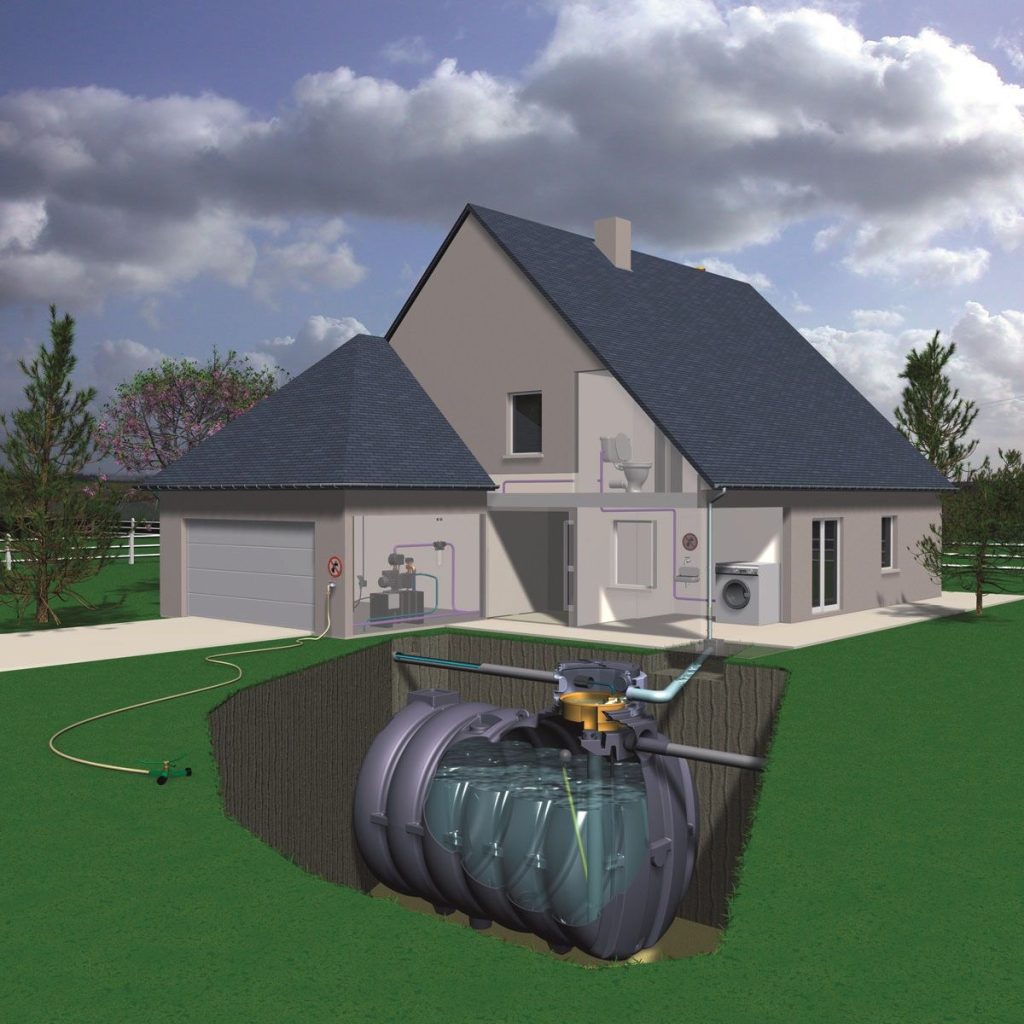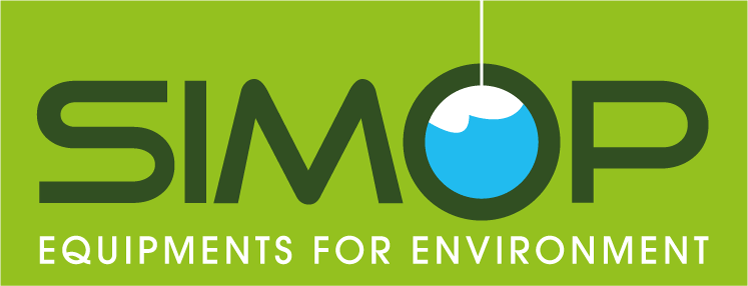Why harvest rainwater?
The preservation of fresh water has become a crucial issue at a time when water resources are under increasing pressure. Rainwater harvesters, long neglected, are emerging as an ecological and economical solution for managing our water supply in a more sustainable way.
A number of uses do not require the quality or price of tap water… . To preserve our water resources and save money, rainwater can be reclaimed for :
- Watering the garden or topping up a landscape pond
- Floor cleaning and vehicle washing
- Flush power supply
- Washing machine power supply
- These uses alone account for over a third of our daily consumption of 150 liters!

How to recover rainwater?
The water falls on your roof and is channelled through the gutters. The water collected in this way flows into a rainwater collector, passing through a filter that eliminates waste (dead leaves, branches, etc.). When the rainwater collector is full, the excess water flows back into the collection system or into an overflow.
In France, an average of 750 liters of water falls on every m2 of soil every year. By choosing a SIMOP rainwater collector, you can recover from 600 litres/m2 of roof in the driest region to 1000 liters in the wettest. Our rainwater harvesters can be installed above ground or underground. Thanks to our rainwater harvesting managers, the water supply is guaranteed by automatically switching between the rainwater reservoir and the distribution network.
Our rainwater harvesters are impervious to corrosion – especially H2S – and are rot-proof. SIMOP rainwater harvesters come in a wide range of sizes, from 3m3 to 60m3.




![AQUAMOP Rainwater harvesting extra flat tank 5 [6022-PLA] AQUAMOP Rainwater harvesting extra flat tank - Main image](https://simop.com/wp-content/uploads/2024/12/6022-pla-aquamop-rainwater-harvesting-extra-flat-tank-main-image-800x364-optimized.png)
![Extra flat AQUAMOP tank with regulated flow rate 6 [6022-REG-PLA] Extra flat AQUAMOP tank with regulated flow rate - Main image](https://simop.com/wp-content/uploads/2024/12/6022-reg-pla-extra-flat-aquamop-tank-with-regulated-flow-rate-main-image-800x364-optimized.png)
![AQUAMOP rainwater harvesting tanks 7 [6022] AQUAMOP rainwater harvesting tanks - Main image](https://simop.com/wp-content/uploads/2024/12/6022-aquamop-rainwater-harvesting-tanks-main-image-800x639-optimized.png)
![AQUAMOP Rainwater tank 10 to 20 m3 8 [6328] AQUAMOP Rainwater tank 10 to 20 m3 - Main image](https://simop.com/wp-content/uploads/2024/12/6328-aquamop-rainwater-tank-10-to-20-m3-main-image-800x800-optimized.png)
![AQUAMOP rainwater tank 10 to 60 m3 9 [6406] AQUAMOP rainwater tank 10 to 60 m3 - Main image](https://simop.com/wp-content/uploads/2024/12/6406-aquamop-rainwater-tank-10-to-60-m3-main-image-800x800-optimized.png)
![Water management for collective systems 10 [6034] Water management for collective systems - Main image](https://simop.com/wp-content/uploads/2024/12/6034-water-management-for-collective-systems-main-image-800x800-optimized.png)
![Pump and rainwater manager for individual systems 11 [6032] Pump and rainwater manager for individual systems - Main image](https://simop.com/wp-content/uploads/2024/12/6032-pump-and-rainwater-manager-for-individual-systems-main-image-800x800-optimized.png)